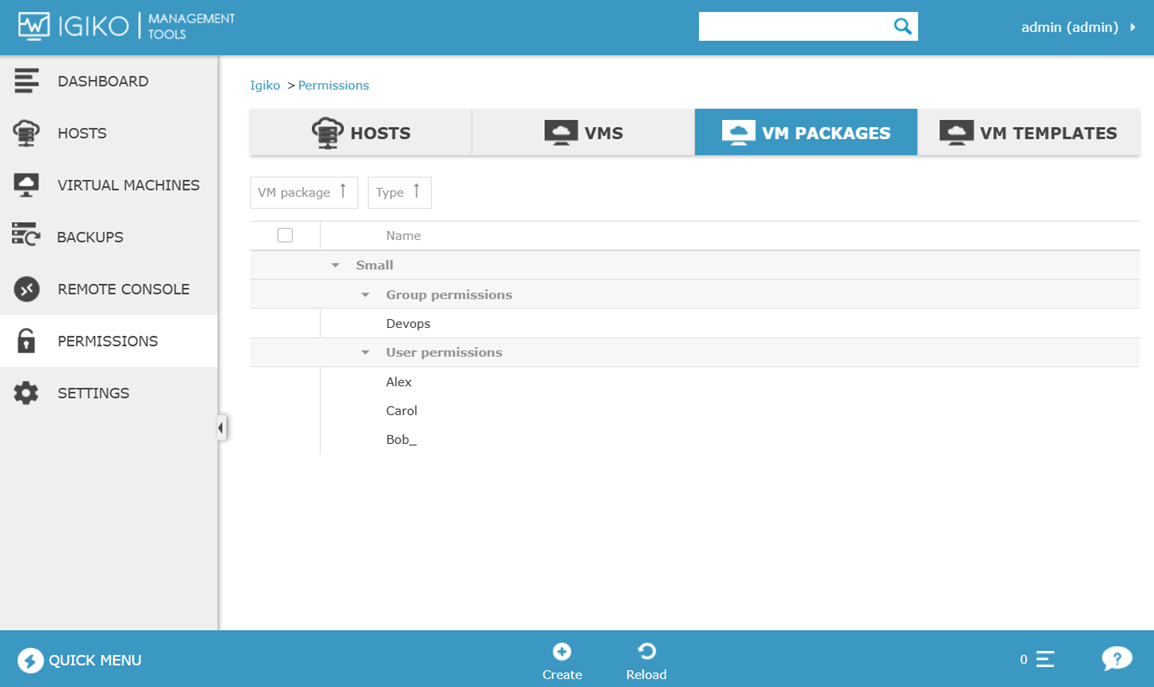VM packages are named sets of virtual machine characteristics that can be used when creating virtual machines. This feature can be useful when you need to restrict the creation of virtual machines by certain users or groups to a fixed set of their characteristics.
At the same time, there is a special Custom package, the permissions to which give the user the opportunity to create virtual machines with an arbitrary set of characteristics.
To configure this feature, go to the Virtual machines page, use the menu on the left and click the Settings button at the bottom of the page. Please note that this button is hidden if you have at least one VM selected in the table above. Next, go to the Packages tab, where you can manage this feature.
To configure the permissions to VM packages, go to the Permissions page, using the menu on the left, and select VM packages at the top.





